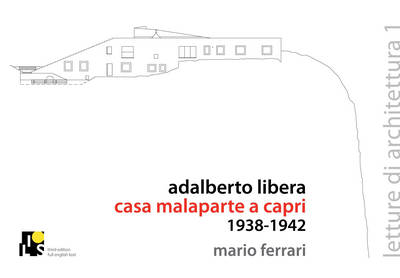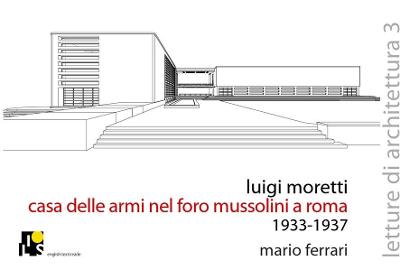Lectures of Architecture
2 primary works
Book 1
Casa Malaparte is an Adalberto Libera project. This statement, that dazzle hypothesis dealing with uncertain paternity, is based on the following arguments: the experts who study this "architecture without architect" collect documents and evidences that partially recompose a picture that, however, lack many fragments. Like in a presumptive trial the experts analyze the documents to demonstrate how, after the first plan and its second version, Libera sneaks out to leave a leading role to Malaparte. The parts of this puzzle, patiently recomposed to demonstrate the role of Malaparte in the plan of the villa on Capo Massullo, invoke the missing fragments that would confute the appearance. Lost fragments can be properly found observing casa Malaparte. "Accusations" are based on the substantial difference between the first plan made by Libera for the building licence the 14th of March 1938 and the final result. This lack of correspondence, together with the absence of the architect from the building site since April 1938, leave many doubts about its real paternity. The story is made up of few chapters, short text, wide bibliography and a chronological section that fix in time the facts.
The three versions of the project are read by graphic and comparative analysis. Two models have been made to show differences and new sights. This small book illustrate facts, and comments about one of the most famous and fine modern Italian building, considering that Adalberto Libera is the author of Casa Malaparte.
The three versions of the project are read by graphic and comparative analysis. Two models have been made to show differences and new sights. This small book illustrate facts, and comments about one of the most famous and fine modern Italian building, considering that Adalberto Libera is the author of Casa Malaparte.
Book 3
Luigi Moretti. Fencing academy in the mussolini's forum, Rome. 1933-1937
by Mario Ferrari
Published 1 March 2013
Set in the widest urban neighbourhood of the fascist Rome, the "casa delle armi" building show the deep and sophisticated typological research around the "balilla houses". Born as an advanced typological experiment it is the most modern of the "National Balilla Opera" buildings: an architecture both with a solid image and a massive functional complexity. The "fluxes" of athletes and the one of clients are sharply driven with no interference in the body of the building. Notwithstanding such a complexity, the parts are clear: two different immense interiors so much different each other. But, like in a Dostoevsky drama, the plot meet some troubles that made impossible the full completion and the celebration of its success. Quickly inaugurated, never really opened, abandoned and soon forgotten, it can be told that the building was born dead. Its oblivion lasted for thirty years when, in the eighties, the need to find a safe place to celebrate the trials against the terrorism, convinced the Ministry of Justice to finally destroy the interiors. The aim of this book is rather not to enter in the field of refurbishment of modern architecture than to tell about the story and the composition rules of this architecture: an affresco of the history and political, urban and architectural frame in which "Casa delle armi" is set. A very sharp 3d model help to come over the old shots imposed by the architect to the photographer, to set new points of view discovering, again, new sides and emotions.

